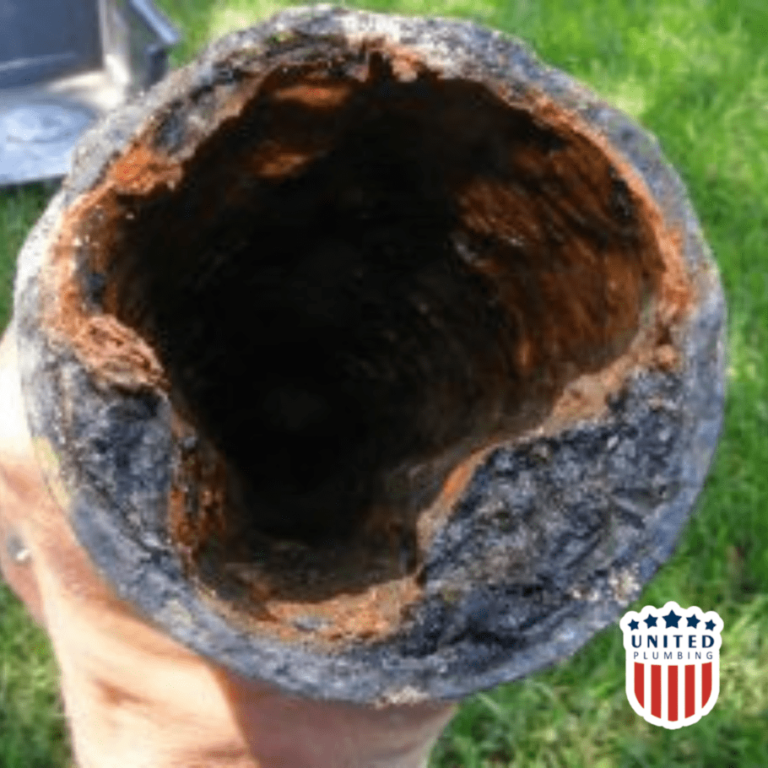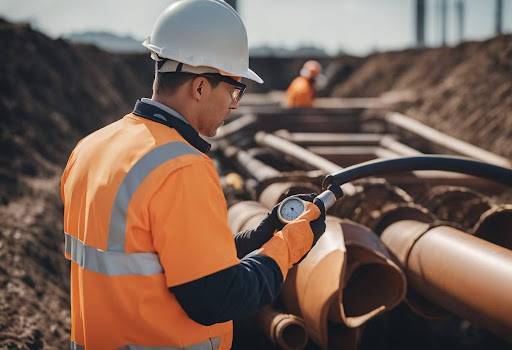FIVE-STAR TEAM WARRANTY &
SAME-DAY SERVICE
What is Orangeburg Pipe? Key Facts and Insights
Orangeburg Pipe is a bituminous fiber pipe that was used primarily for sewer lines. Originating from Orangeburg, New York, it was manufactured by the Orangeburg Manufacturing Company. Characterized by its lightweight and easy-to-install properties, Orangeburg pipe became a popular choice for residential and commercial plumbing from the 1940s to the 1970s.

The history of Orangeburg pipe dates back to World War II when the need for cost-effective materials surged. Made from layers of wood pulp impregnated with pitch, these pipes became a common alternative due to the scarcity of metals. Despite their initial appeal, they have since been known for their susceptibility to deterioration and collapse under pressure over time.
Modern sewer line maintenance often involves replacing aging Orangeburg pipes. They are prone to issues like deformation, root infiltration, and clogging. Knowing what Orangeburg pipe is can help homeowners and property managers make informed decisions about upgrades and necessary repairs.
Understanding Orangeburg Pipe
Orangeburg Pipe, also known as bituminized fiber pipe, is a type of sewage piping made from layers of wood fibers and coal tar. It was widely used for sewer lines in the mid-20th century due to its affordability and ease of installation.
Composition and Characteristics
Orangeburg Pipe consists of layers of wood fibers impregnated with coal tar, creating a bituminous fiber. These layers are pressed together to form a rigid pipe. The resulting product is lightweight and easy to cut.
While it offered significant cost savings compared to traditional materials like clay or cast iron, it is less durable. Over time, the wood fibers can absorb moisture, leading to swelling and deformation.
History and Usage
The use of Orangeburg Pipe can be traced back to the early 1940s, gaining popularity during World War II due to shortages of conventional pipe materials. The Fiber Conduit Company of Orangeburg, New York, manufactured most of these pipes.
Used primarily in the United States, this material became commonplace in Boston and other cities. Its primary application was in sewer and plumbing systems, particularly in residential construction.
Common Issues and Deterioration
Orangeburg Pipes are prone to a variety of issues over time. One of the most common problems is deterioration of the material, resulting in cracks and leaks. Tree roots often infiltrate the pipes, causing blockages and further accelerating damage.
Over time, the pipes may collapse under pressure, leading to significant plumbing failures. Homeowners with these pipes may face recurring plumbing problems and should consider replacement with more modern, durable materials.
Inspection and Replacement of Orangeburg Pipe

Homeowners often face challenges with Orangeburg pipes due to their tendency to deteriorate. Knowing how to identify these pipes and understanding the replacement options can help mitigate issues like sewer line collapse and efficiency loss.
Identifying Orangeburg Pipe
Orangeburg pipes, typically found in homes built between the 1940s and 1970s, are made from wood pulp and pitch. Inspections usually involve video inspection technology to detect these pipes. Look for signs like frequent clogs, sewage backups, and reduced water pressure, which indicate potential issues.
Professional plumbers can confirm the presence of Orangeburg by conducting thorough inspections. They may also identify sewer gas leaks, which are common with older, deteriorating pipes.
Replacement Options and Considerations
Replacing Orangeburg pipes is essential to maintain the integrity of a home’s sewer system. Cast iron, PVC, and clay pipes, ABS are common replacements, each with distinct advantages.
PVC and ABS pipes are durable and relatively easy to install. Cast iron pipe is known for its longevity and strength but can be more costly. Clay pipe provides a traditional option but may not be as durable as modern materials.
Trenchless solutions, such as pipe lining or cured-in-place pipe, allow for less invasive replacements that minimize disruption. A licensed plumber can help homeowners choose the best option based on specific needs and conditions.
Preventing Future Issues
Preventative maintenance can keep the new sewer system functioning efficiently. Regular inspections by professional plumbers, along with routine cleaning services, can help to avoid clogs and potential sewage backups.
Using trenchless technology can also extend the lifespan of the pipes by addressing issues without needing extensive excavation. Proper pipe flow and maintenance ensure ongoing efficiency and reduce the risk of future failures.
Implementing these practices helps protect against future problems, ensuring a reliable and durable sewer system for homeowners.
Post views: 734
Latest posts

Electrical Panel Upgrade California: Costs, Safety & When You Need One
An electrical panel upgrade in California is one of the most important safety and performance improvements a...

Coldest winter for Bay Area in 2025 And What Your HVAC System Should Actually Be Doing
If your home feels colder than usual this winter, you’re not imagining it. Bay Area home heating systems are being...


If you still have questions or need advice, please leave a request and we will contact you as soon as possible
Need a plumber and got no clue where to start?
(408) 539-6936Facing a plumbing issue? Get a FREE in-person estimate and quick solutions from our skilled technicians, ensuring your home runs smoothly again!
